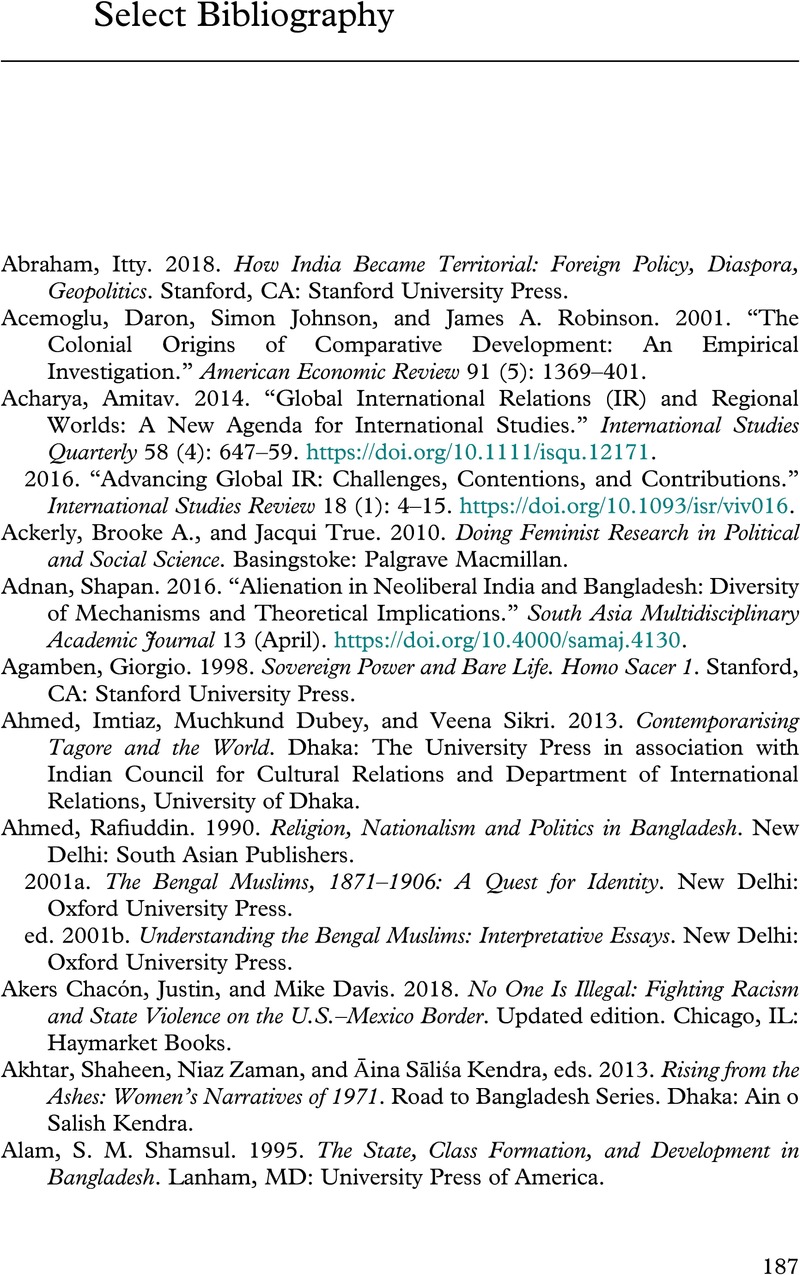Book contents
- India’s Bangladesh Problem
- India’s Bangladesh Problem
- Copyright page
- Dedication
- Contents
- Figures
- Tables
- Acknowledgments
- Introduction
- 1 Neoliberalism and Identity-Based Hierarchy
- 2 Borders as Sites of Strength and Vulnerability
- 3 Assam and the “Illegal” Other
- 4 Whatever Happened to Bengali Nationalism? The “Appeased” Muslims of West Bengal
- Conclusion
- Select Bibliography
- Appendices
- Notes
- Index
- References
Select Bibliography
Published online by Cambridge University Press: 30 March 2023
- India’s Bangladesh Problem
- India’s Bangladesh Problem
- Copyright page
- Dedication
- Contents
- Figures
- Tables
- Acknowledgments
- Introduction
- 1 Neoliberalism and Identity-Based Hierarchy
- 2 Borders as Sites of Strength and Vulnerability
- 3 Assam and the “Illegal” Other
- 4 Whatever Happened to Bengali Nationalism? The “Appeased” Muslims of West Bengal
- Conclusion
- Select Bibliography
- Appendices
- Notes
- Index
- References
Summary

- Type
- Chapter
- Information
- India's Bangladesh ProblemThe Marginalization of Bengali Muslims in Neoliberal Times, pp. 187 - 206Publisher: Cambridge University PressPrint publication year: 2023



